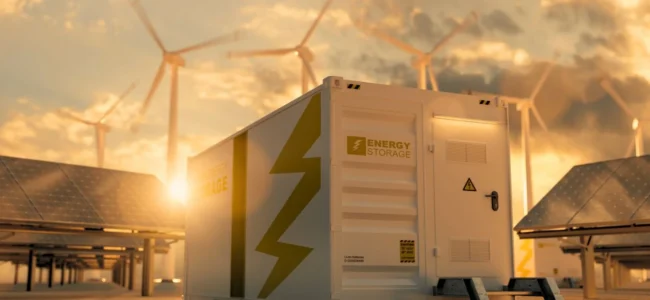
More and more investors are not only looking for returns but also want to contribute more to climate protection, sustainability and responsible treatment of people and nature. As a result, they are increasingly turning to impact investing. What is behind it, and how it works with Invesdor?
In the past, it was unusual for a listed company to be confronted by climate activists at a general meeting.
However, protests against companies’ eco-balance and sustainability criteria have long since ceased to be a rarity – and are no longer perceived as a negligible aberration of overzealous young people. Instead, companies’ interest in the responsible treatment of people and the environment has now reached the centre of the investment community.
Fund managers now give just as much weight to the sustainability strategies of corporations in their valuations as individual activist shareholders. As a result, they are increasingly demanding a consistent orientation towards sustainability goals from management.
Get to know the acronyms of impact investing
Acronyms and terms such as ESG criteria and SDG have entered the everyday language of professional investors. Impact investing, in particular, is becoming increasingly popular. But what exactly is it, and what does it mean for investors?
Let us first look at the abbreviations. ESG stands for Environment, Social and Governance. ESG is a set of assessment measures that can be used by financiers, shareholders, governments and stakeholders to rank companies’ sustainability efforts. Unfortunately, there is no single, internationally recognised set of ESG criteria or benchmarks, so many different ideas exist.
SDG is the abbreviation for the Sustainable Development Goals, referring to 17 global goals that 193 United Nations states agreed on in 2015 to use as a guideline for using financial resources for social and environmental purposes.
ESG and SDG thus provide the criteria that come into play in impact investing. However, impact investing goes one step further and includes “effective” investing in sustainability.
Impact investing also means that the positive impact of an investment must be verifiable. For example, how much natural resources and energy have been saved, and how much CO2 emissions have been reduced?
So it is not just a matter of avoiding investments in environmentally harmful businesses but of making the positive effect of an investment on a sustainable economy and a better environment tangible. The result is what matters.
Maarten de Jong, the founder of the crowdfunding platform OnePlanetCrowd specialising in sustainability projects and now part of Invesdor, puts it in a nutshell: “Use your business as a source for good”.
Decisive criteria for impact investing
Impact investing has been on the rise for several years. Only investing “sustainably” or “green” has proven to be too vague in the past, mainly since the criteria for such investments are not prescribed. This leads to a supposedly green fund investing in nuclear power plants because they save CO2. Or that large oil companies are in the fund portfolio because they also promote solar power plants. Or car manufacturers who save energy in production but continue to stick to the combustion engine.
Criteria for sustainable investments are open to debate, and their positions are sometimes far apart. The decisive question in impact investing is therefore what the investment has brought to the sustainability goal and how significant the contribution is. For many investors, returns are only worth something as long as the company or project positively affects the environment. “We believe that more and more people in Europe are increasingly interested in investments that offer them both a financial return and a sustainability return. We call it a double return,” Maarten de Jong sums it up. “I believe this movement will grow significantly in the coming years.”
The many opportunities for impact investing
The beauty of impact investing is that investors and savers have many different options for making an appropriate investment.
- Eco-banks offer sustainable current accounts and sustainable overnight and fixed-term deposits.
- Investment funds committed to impact investing: For example, microfinance funds grant microloans to people in the Third World so they can build up a livelihood.
- Impact funds are usually equity funds that select stocks according to SDG or ESG criteria and then measure their impact.
- Green or social bonds are bonds issued by states, countries, municipalities or banks and companies that serve to finance wind or solar park projects, for example. Germany is one of the largest markets for green bonds; there is even a separate trading segment for them on the Frankfurt Stock Exchange.
- Impact investing also offers the opportunity to invest in sustainably oriented companies. Direct investments in corporate bonds and corporate investments via crowdfunding are particularly suitable for this purpose.
The risks of equity investments are often complex for investors to keep track of. This makes the information provided by the company, the project, the fund provider or the investment platform to investors all the more critical.
Crowdfunding excellence in impact investing
Crowdfunding has also offered a platform for young companies focusing on sustainability for many years.
Crowdfunding platforms such as Invesdor check the seriousness of business models and figures and analyse the competition, management and affected markets. Then, only investment possibilities meeting the criteria are offered to the “crowd”.
“In the last five years, crowdfunding has become a professional investment opportunity,” emphasises Niklas Green, Project Manager at Invesdor Nordics. “Before, it was something that investors did for fun and to support companies. Now, retail investors invest in companies that have good prospects and high return potential.”
Meanwhile, the “impact” of investments is increasingly receiving additional tailwinds from political decision-makers. OnePlanetCrowd founder Maarten de Jong illustrates this with his home country: “For projects such as solar panel fields or wind turbine parks, the regional authorities in the Netherlands require that a certain percentage of the capital must be investable by local residents so that the local community also benefits from the projects. Together with the project managers, we then organise a funding campaign in the region intending to increase the acceptance of the projects via citizen participation.”
In this way, crowdfunding with the support of politics, becomes the ideal platform for impact investing.
Maarten de Jong also has an excellent example of an ideal impact investment in Fairphone: “This is an Android smartphone made with metals and minerals from sustainable supply chains that can be repaired and upgraded by the owner to avoid premature replacement. The project has huge sustainability potential.”
OnePlanetCrowd funded Fairphone with €2.5 million in 2018.
“Crowdinvestors were among the core investors at the time and have been instrumental in making the company profitable today. Now the crowdinvestors can sell their shares in a new financing round with a good return. This is a nice success story,” Maarten de Jong continues.
Apart from returns and responsibility, there is another good argument for investors in impact investing via a crowdfunding platform like Invesdor: They can participate in sustainable projects even with small amounts.
“In my view, crowdfunding offers private investors the only opportunity to invest in growth companies that were previously only accessible to professional investors,” emphasises Niklas Green.
With crowdfunding, the minimum investment is usually between 250 and 500 euros. This makes it possible to invest in growth companies with a much smaller portfolio and to diversify one’s portfolio more.
“This makes it easier for investors to spread their commitment, return opportunities, and investment risks across many companies with a sustainability focus. And – as Maarten de Jong puts it – “to use business as a source of good”.








